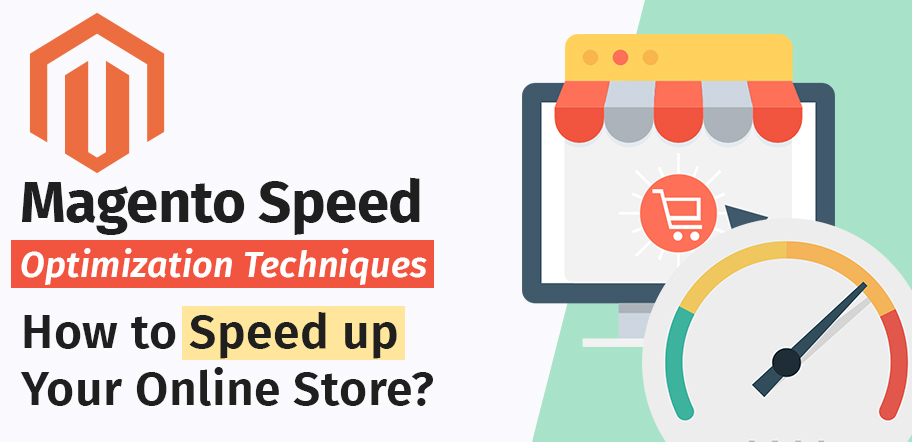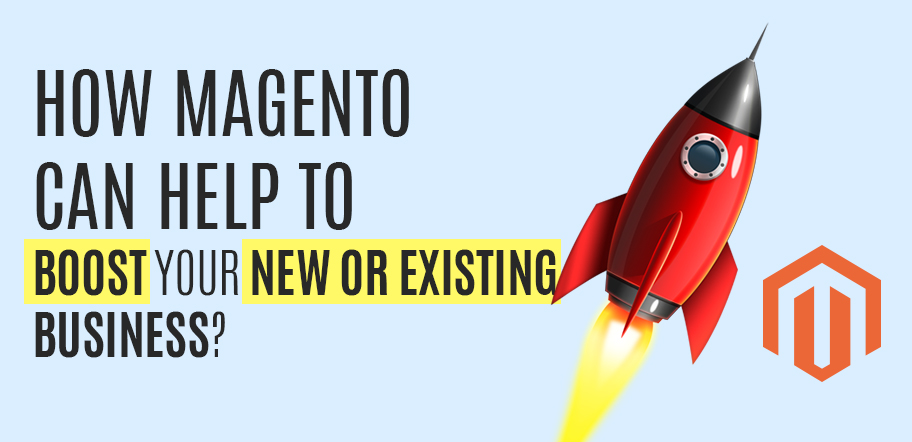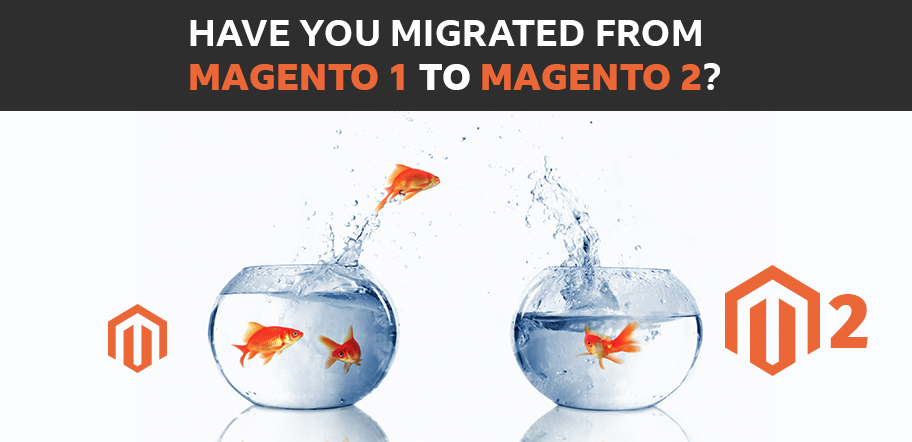Magento, being one of the most popular eCommerce platforms, most enterprises choose to rely on it to build online stores. It offers a variety of themes and customization options that every business would want to provide its customers. And hence, the platform is famous for its versatile yet high-performing quality.
Among the top 100,000 eCommerce websites, 16% of them are using Magento as their eCommerce framework, and the number becomes 22%, including the Magento Enterprise plans. The number is enough to believe the significance of the eCommerce framework.
To ensure your eCommerce store remains high-performing, there are specific speed optimization steps to follow. These Magento development services can help merchants address multiple issues related to website performance, from loading speed to navigation and overall user experience.
Why does Website Speed Matter for e-commerce?
According to a survey, people take all of five seconds to decide whether they want to be on a website or not. If a website is slow, people move on to other websites. This is why website speed matters a lot in e-commerce. The main idea is to make visitors stay on your website longer than five seconds. This will help you with getting more customers and increase sales.
How does a slow-loading Website Affect Sales?
A slow-loading website, as mentioned above, is enough to drive away potential customers. If they don’t spend time on the website, there wont be any sales. A slow-loading website means you lose visitors and customers at the same time. In order to have sales, you need people who will spend time on your website as mentioned above. This way you will get to have increased sales as well.
What are the common Issues With Magento Website Performance?
As mentioned above, slow speed is a primary issue with a Magento website. Other issues include the following:
- Poor hosting
- Incorrect operating modes
- A problematic caching system
- Excessive use of extensions or themes
Let’s discuss some essential speed optimization techniques in Magento. It should help you increase website loading speed and hence, a good customer engagement ratio.
Cache Management
There are multiple forms of caching you can implement with Magento to enhance performance. Successful combinations include NGINX, APC, MemCache, and Varnish caching. The framework also provides a built-in cache management module, but developers should ensure that these cache types are enabled.
In addition to server-side caching, optimizing browser caching is crucial for speed optimization. This can be achieved by adding a .htaccess file and enabling Gzip compression. While the latest versions of Magento typically have this setting enabled by default, older versions may require manual configuration.
For effective implementation of these caching strategies, it’s advisable to hire Magento developers who can ensure that your caching system is optimized for the best performance.
Content Delivery Network
It’s important to serve your website visitors with immediate content. Especially when you have an eCommerce website and visitors instantly want the products on the display. It becomes frustrated for visitors to wait for longer waiting times. To optimize it, you need to manage it with a content loading mechanism.
To see a positive change in your website loading time, implementing a content delivery network always works. It is one of the easiest methods to decrease website loading time. You can get the content loaded for your website visitors from different locations around the world. So the buyers can easily navigate through the product images and related animations.
Image Optimization
Images can significantly slow down your website if they are not optimized. Large image sizes in MBs consume more space, increasing the waiting time for product pictures to load. Prospective buyers prefer a seamless experience, making it crucial to display optimized images that load quickly.
You can enhance the performance of your Magento 2 site by optimizing images. By compressing image sizes and converting product images to JPEG format, you can achieve a notable improvement in loading speed. Additionally, keeping layout and logo images in PNG or SVG formats is essential to maintain the website’s look and feel.
For those looking to implement these optimizations effectively, a Magento 2 upgrade service can provide the necessary tools and expertise to ensure your images are optimized for the best performance.
Installing Varnish
Varnish is an open-source full-page cache accelerator to increase the HTTP level traffic. Since the plugin is faster than the built-in cache accelerator, configuring it to the website makes perfect caching for eCommerce websites. It caches the parts of your webpage like fragments of files in temporary memory. Hence, it increases page loading speed and reduces response times. It helps with the entire HTTP protocol to overcome the problems with servers which are giving slower response times in bigger eCommerce websites.
To configure Varnish in your Magento Admin panel:
- Stores > Configuration > Advanced > System >Full Page Cache
- Caching Application List > Varnish Caching
- Enter value in TTL for Public Content Field
- Enter the specific information by expanding the Varnish Configuration field.
Full Page Cache
Magento 2 has made it easy to implement full-page cache. You don’t need to use a false attribute to exclude a block since it considers an entire page in which the block is residing. You can check on multiple pages where cacheable attributes are used to see whether the pages have problems with caching. There are also manual techniques to cache the full page. You can do it by putting the store in development mode on a local or staging environment.
This is one of the essential tricks that developers use to optimize Magento stores.
Minimize JS and CSS
Javascript and CSS can slow down your Magento website by increasing the number of requests. Minimizing these files can speed up magento website. Here is how to do it. In the admin panel of the website, you need to navigate to the developer settings. Then you need to go to javascript settings and CSS settings and merge them together.
Improve TFFB
This is one of the key factors to consider while optimizing the speed of your Magento website. TFFB or Time to First Byte is the time taken between a request and the first server response. This means that your server needs to be quick at all times. Improving the TFFB will make your website faster and it will be able to retain potential customers.
Enable Expire Headers
Before learning about enabling expire headers, let us talk about why do you need them. Expire headers are there to inform the browsers about when it should request a file from your server. They also inform the browser to clear up the cache. This means a visitor to your website doesnt need to wait for the website to reload if they are visiting it for the second time. This is why you need to enable expire headers for your website.
Check Third Party Extensions
Magento websites are known as slow moving and heavy. This is because most of the time it’s working with a lot of third party extensions. Checking on these extensions and removing the unused ones can make your website light and fast in no time at all. This is one of the best ways to ensure that your Magento website runs smoothly at all times and offers your visitors a pleasant experience.
Here are some Magento Extensions which can be helpful to your online store: Best Magento Extensions
Conclusion
It would be best if you follow the best coding practices while developing online stores. It comes with experience, in-depth knowledge about the eCommerce framework and with the support of an extensive range of plugins that the framework offers. Of course, it’s no easy task to speed up the eCommerce website altogether but we can do it with practice, right tools and experience.
Share your views on Magento Speed Optimization techniques with us in the comment section. Also, connect with us on Twitter for more updates on eCommerce technologies.
FAQs
What is Magento?
Magento is an e-commerce platform that provides merchants with a digital online store. It includes powerful tools for managing catalogues and for search engine optimization. Magento is the best e-commerce platform for big companies because of the features it offers.
Where can I host my Magento website?
You can host your Magento website on any good and efficient hosting provider. However, there are a number of requirements that are required for hosting a Magento website. You can find the list of requirements on the official website of Magento.
How to get support for Magento?
The best way to get support for Magento would be through an expert on Magento websites. You can find such experts both offline and online. You can also post your question on Magento forums and get them answered by Magento experts.
What is the benefit of Magento?
As mentioned above, Magento is suitable for big companies because of the various features it offers. Along with all these, it also offers many in-built tools for customizing and presenting your website in the most effective way.
Is Magento generally slow?
Magento does have a reputation for being slow because of its loading speed. However, you can work around the various tools and features to make your website faster.
What can Magento be used for?
As mentioned above, Magento is an e-commerce platform meant for online stores. If you own a business, you can display your products and sell them using the Magento platform.


